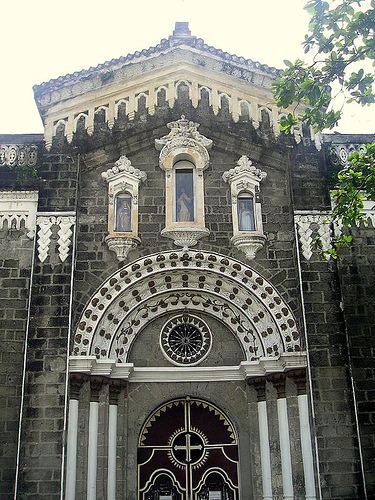Aside from the art of guisa and religion, one of the greatest Spanish contributions to the Filipinos is the concept of nationhood. Before the Philippine Revolution of 1898, most rebellions against the Spanish colonist were confined on reasons of personal injustices (like the refusal of a priest to bless Dagohoy’s dead brother that ignited the longest running insurgency against the colonial government), excessive colonial policies (like the Wine Monopoly which triggered the Basi Revolt), and religious fervor (like the cause of Hermano Pule). The concept of independence began to take shape only in the years leading into 1898 but even this is within the parameter of a Tagalog kingdom or republic. The transition into the idea of nationhood was espoused and weaned by a principalia that have been leveraging with the colonialist government ever since. This principalia is dominated by the Tagalogs and Kapampangans who eventually steered the Philippine Revolution of 1898 that started our march into nationhood. This fact is stated in the Philippine flag where the 8 rays of the sun honors the first provinces to revolt against Spain
The epitome of these dominant ethno-linguistic groups are the provinces of Bulacan (synonymous with the Tagalogs) and Pampanga (synonymous with the Kapampangans). Aside from a rich political history, these provinces are also teeming with ecclesiastical structures whose sheer number is too much for a single article. The story of my visita iglesia in these provinces were therefore divided into 5 parts: McArthur’s Church(es) which is about colonial churches along the McArthur Highway and have been previously blogged, the colonial churches along the Manila Bay coastal area, Pampanga colonial churches along the Angeles City-Dinalupihan and the Gapan-San Fernando-Olongapo Roads, and those in Bulacan along the National Highway and the province’s interior. This article is about my visita to the coastal churches.
The first stop will be Bacolor’s church of Nuestra Senora del road to Olongapo Mt. Pinatubo


A left turn from the

My next stop from Lubao is Sasmuan --- the town once scandalously known as Sexmoan which is a hispanized form of the Kapampangan word sasmoan meaning “to flock”. It was founded as a pueblo and established as an Augustinian mission in 1590. Fr. Jose Duque (OSA) probably built the first parochial buildings from 1659 to 1677. The rising waters of the river washed these away and new buildings were probably erected in the early 18th century. The present

A short drive from Sasmuan is Guagua, a town whose name was derived from the Kapampangan word uaua that means “the mouth of the river”. The Augustinians built the first church from light materials after accepting it as a mission in 1590. New parochial buildings were reported to be being constructed in 1641. Fr. Jose Duque (OSA) --- a major participant in the pacification campaign of Pampanga after its revolt of 1660 --- initiated the construction of what is probably the present

National Heritage: Church Art at its Best
The Augustinians accepted Betis as a visita of Tondo in 1572. Fr. Fernando Pinto (OSA) later had a church built from light materials from 1596 until 1604,. A stronger structure was probably constructed under the supervision of Fr. Jose dela Cruz (OSA) from 1665 until 1687. The present church of Santiago Apostol province of Pampanga


From Guagua, the next colonial churches along Pampanga’s coast of

In Bulacan, the entry point to the province’s coastal towns is the historic city of

The more famous colonial church in Malolos is of course the nearby

The way to Hagonoy from Malolos is through narrow roads passing through the town of

Next on the itinerary is the town of Bulacan that was first established as a visita of Tondo in 1575 and founded as a pueblo in 1578. Parochial buildings were started to be built in 1578 that were finished in 1762. Immediately after, it was occupied and burned by the invading British and were later rebuilt. Repair works were made in 1812 until around 1827. Earthquakes in 1863 and 1869 later damaged the walls and the bell tower, respectively. The church (dedicated to San Agustin) was damaged in yet another earthquake in 1880 and was started to be rebuilt in 1884 under the supervision of Fr. Francisco Valdes (OSA) who would later become a bishop in Spain. The bell tower was also rebuilt in 1889. Bulacan is the hometown of two Filipino heroes --- Marcelo H. Del Pilar and his nephew Gen. Gregorio del Pilar --- who were probably baptized in the church. It would be worthwhile to drop by the Marcelo H. Del Pilar Shrine near the church, which I did, where the hero’s remains are interred and some historical documents are displayed.

The visita culminated in Obando where my search for the past and my passion for colonial churches started…









































